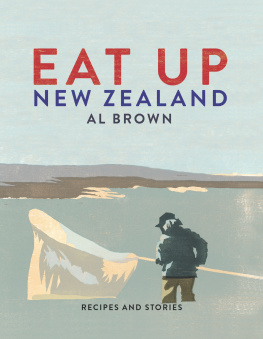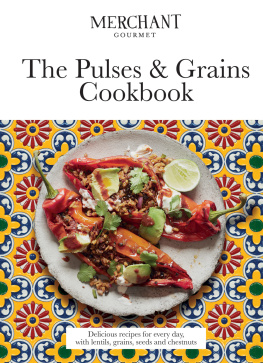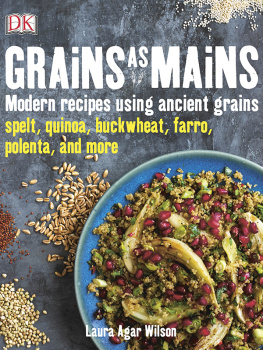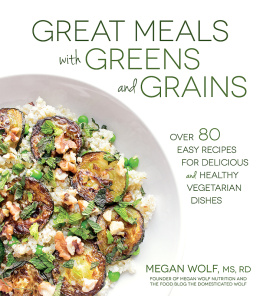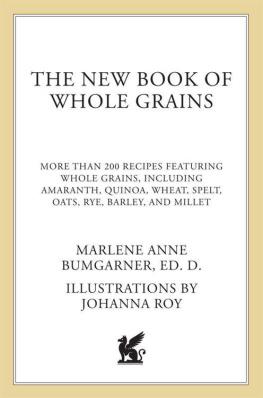CONTENTS
Seeds, pulses, legumes & grains
How to prepare, cook, use & store
Whole grains, pulses, legumes and seeds have long suffered from an image problem. They have been eaten, or so it seems, by those more concerned with health than with flavour. The fact that they were good for you seemed to mean that consuming them was a penance rather than a pleasure. And many of us have failed to cook them with any kind of understanding or verve.
A plateful of boiled beans, unseasoned and unflavoured, is not going to excite anyones taste buds. Yet grains, pulses, legumes and seeds are widely used in the most exciting cuisines. Cooks in the Middle East, Morocco, India, Italy and Spain dont cook with these ingredients because theyre healthy; they do so because theyre an integral part of their culinary tradition. Its hard to cling to the idea that lentils are dull if you eat them cooked the Indian way thick with coconut milk and scented with cardamom and coriander. It is impossible to think that burghul (bulgur wheat) is just beige pap when faced with a platter of kisir, a Turkish dish of burghul flavoured with cumin, garlic, parsley and pomegranate molasses, rich with tomatoes and olive oil. Our relatively recent exposure to the cuisines of other countries has gone a long way to making us embrace grains, pulses, legumes and seeds in a way we never have before. But weve only really dipped our toes in the water.
I have never wanted to eat healthy food as a matter of course I am pretty greedy and I want to eat food because its gorgeous. But when I looked more closely at the health benefits of these ingredients I was astonished. These foods are delicious and good for you. I started to try things I had never considered before: tiny, nutrition-packed chia seeds are easy to add to muesli and breads, and they contain more omega-3 fatty acids than salmon. Wholemeal (whole-wheat) grains were also a revelation they make a nutty and sweet salad base and are also chock-full of protein, potassium, iron, calcium and vitamins. I made my own granola and started looking forward to breakfast when I was going to bed. I had to make a little bit more effort in terms of organisation if a grain or bean needed to be soaked overnight I had to remember to do it. But many of these ingredients can be cooked in advance and sit happily in the refrigerator until I want to turn them into something wonderful.
The dishes in this book are very good for you. By slightly altering your outlook and opening your mind about what you are prepared to try, they are easy to include in your cooking repertoire. But the best thing about incorporating these healthy foods into your cooking is that they are absolutely delicious. Just have a go. The proof of the pudding is in the eating
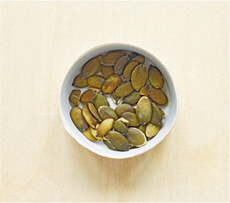 | PUMPKIN SEEDS
Pumpkin seeds (pepitas) are delicious toasted and can be sprinkled on bread and cakes or mixed into dough or batter. They are also good scattered over salads. In autumn when cooking with pumpkin you can remove the seeds, separate them from the fibres and dry them in a 150C (300F) oven salt them or coat them in spices beforehand if desired. Its also possible to make pale green milk from pumpkin seeds. Blitz them with water about 1 litre (34 fl oz/4 cups) water to 150 g (5 oz/1 cup) seeds then squeeze the mixture through muslin (cheesecloth) and collect the milk. Use this in soups or sweeten it and add to smoothies. The seeds can also be made into luscious green oil, particularly popular in Austria for salad dressings. Pumpkin seeds are suitable for sprouting.
FULL OF:
protein, manganese, magnesium, iron, zinc and phosphorus |
 | SUNFLOWER KERNELS
Sunflower kernels can be bought shelled (small and beige) or unshelled (black and beige). Add them to bread dough, muesli and cereals, or sprinkle on salads. You can also make milk (see Pumpkin seeds for method). Sunflower oil is one of the most used cooking oils in the world. Its light flavour is probably the reason for its popularity, as it doesnt interfere with other elements in a dish. It is also considered to be very healthy as it combines monounsaturated and polyunsaturated fats, and has low levels of saturated fat. The oils mild flavour also makes it useful in dressings where you want other flavours to dominate, for example, in South-East Asian dressings containing rice vinegar, soy and ginger. They are also suitable for sprouting.
FULL OF:
manganese, magnesium, phosphorus, folic acid vitamin E and vitamins B6 and B1 |
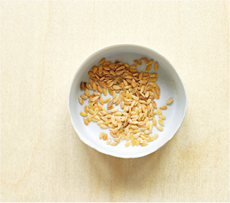 | LINSEEDS
Linseeds, also known as flax seeds, are slightly larger than sesame seeds with colours ranging from deep amber to reddish-brown. Because they are small its easy to add them to foods such as bread, muesli, granola or pikelets (griddle cakes) without their flavour being too intrusive. Linseeds are popular in Eastern Europe as a seasoning for soft cream cheese and they are sometimes sprinkled on potatoes. Linseeds are also made into strongly flavoured oil, which needs to be kept in the dark or it deteriorates. The oil is usually sold as a health supplement in capsule form. Linseeds are suitable for sprouting.
FULL OF:
omega-3, manganese, magnesium, phosphorus, fibre and vitamin B1 |
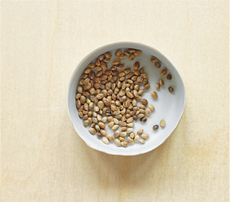 | HEMP SEEDS
These tiny seeds belong to the cannabis family, although they do not have any of the effects of the psychoactive variant. They have long been used in the cuisines of cultures like China, where they are eaten at the cinema in the way popcorn is eaten in other parts of the world. As well as sprinkling them onto bread, the easiest way to eat hemp seeds is whizzed up in a smoothie or added to muesli or granola. The seeds are also made into oil, which has a lovely nutty flavour and makes an interesting change when used in salad dressings add a tablespoon to smoothies if you like. The oil is very much worth experimenting with.
FULL OF:
omega-3, -6 and -9, fibre and vitamins B and E |
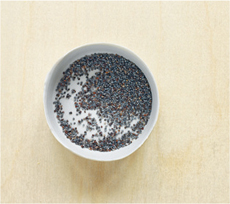 | POPPY SEEDS
These tiny seeds come in dark grey and ivory-coloured varieties. They have a distinctive flavour when used in substantial quantities, such as in Eastern European pastries, but are more often used in smaller amounts to give colour and a slight crunch to breads and cakes. They are particularly good added to the batter of citrus cakes and the dark seeds look brilliant in beetroot (beet) cakes. Scatter them over salads that contain brightly coloured ingredients such as carrots or beetroot. Theyre also lovely tossed with tagliatelle and sprinkled on Italian dumplings, especially those from the north of Italy where gnocchi can be made from bread, beetroot and quark. Poppy seeds are suitable for sprouting.
FULL OF:
fibre, B vitamins, iron, calcium, potassium, manganese, magnesium and zinc |







